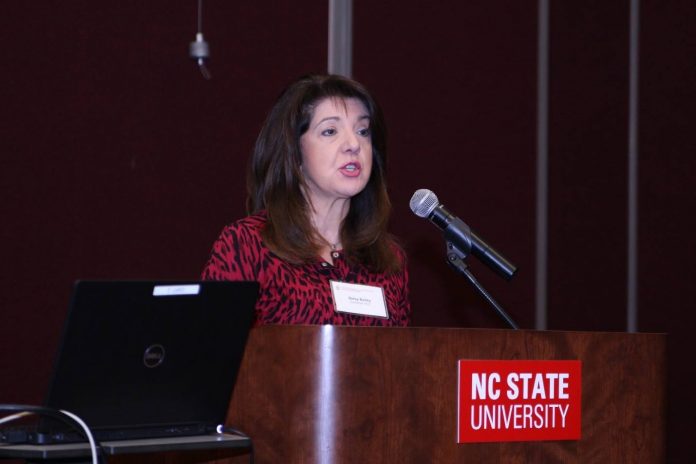The annual North Carolina State Construction Conference, normally held in March, took place on Aug. 28 — and, reflecting the pandemic conditions, the event was held online rather than in person as it has been for the previous 33 years.
Carolinas Associated General Contractors (CAGC) and AGC of America were well represented at the event, presenting two of the thirteen sessions available to hundreds of private and public sector engineers, contractors, architects and other construction industry professionals, CAGC reported.
The annual conference featured conference sessions about the state budget and capital financing, legislative and economic updates and several presentations regarding design and construction project delivery.
CAGC reports that Betsy Bailey, the association’s NC Government Relations and Building Division director teamed up with AIA/NC executive director David Crawford to review legislative and budget actions over the two-year biennium.
The two speakers described how the COVID-19 pandemic has affected legislative activities this year, beginning with allocating NC’s share of the federal money from the CARES legislation.
“While significant revenue losses were initially projected for the current fiscal year, the legislature was able to close the shortfall gap due to revenue surpluses that accumulated from lack of spending resulting from the Governor’s vetoed state budget,” CAGC reported. “That veto and legislator’s inability to override the veto, meant no new money was spent which allowed a surplus to pile up.”
Bailey said one of the casualties of last year’s budget veto was the $1.3 billion biennial appropriation to the State Capital Infrastructure Fund. “Because this money was not approved to spend, it was used to help cover revenue losses from the COVID pandemic” she said.
Bailey added that the total capital funding appropriated through several individual bills passed this year, primarily for UNC projects, totals less than $200 million with $85 million of that amount allocated for repair and renovation.
The legislative update also cited Sept. 2 (today) as the day legislators would return to Raleigh hoping to appropriate additional federal funding from Congress.
“But Congress has not passed new pandemic recovery legislation. State lawmakers are, however, expected to take actions that appropriate the rest of the federal CARES funding, increase weekly unemployment payments and make board and commission appointments,” CAGC reported on its website. “One recent development also being considered is a proposal that would provide stimulus checks to parents as relief from costs of education and child-care during the pandemic. ”
Other items discussed included the new continuing education requirements for general contractors and changes to indemnity statutes enacted last year.
AGC of America chief economist Ken Simonson presented the conference’s annual economic update, where he described the results of surveys since the pandemic struck in March. “Simonson shared the results of the most recent survey from June reporting that the PPP loans had helped many contractors bring back employees that they may have initially laid off,” CAGC reported. “However, Simonson warned that the most recent survey results show that as more projects are delayed or halted, contractors expect it will take much longer to return to normal.”
The construction job data for NC is still well below the state’s peak in 2007.
However, based on current construction jobs data, Greensboro and Raleigh metro areas are close to that 2007 high-water mark with Charlotte not far behind. The good news for NC is that growth in population will fuel construction activity as the state continues to add new residents.
Simonson said the forecast for the rest of the year is very uncertain. Residential construction jobs should gradually continue to increase but non-residential public work will be slow.
“State DOTs lost $37 billion in revenue and state and local governments don’t have funding for infrastructure. PPP loans are running out and no federal action is expected until next year,” Simonson said.
AGC’s long-term forecast confirmed that construction market uncertainty may last for a while and will impact both private and public sector construction. “Additional federal funding is not likely until next year,” Simonson said. “And this funding will be dependent on who wins the election.”

